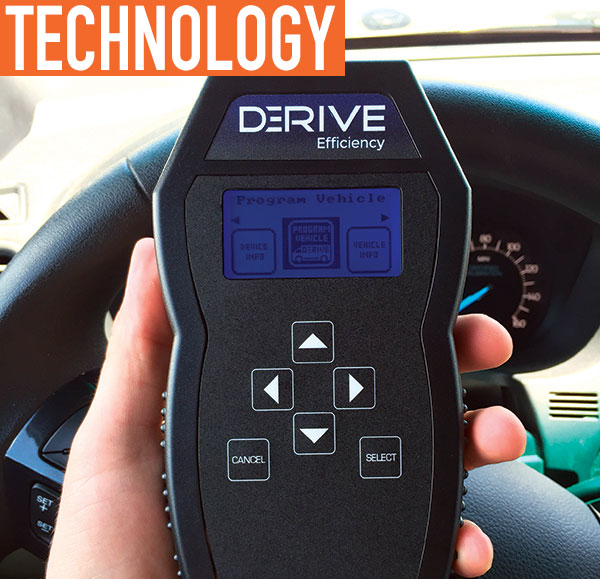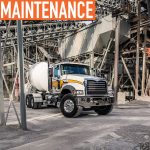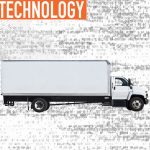Few things are more appealing to fleet managers than guaranteed savings. With uncertainty around costs, maintenance, and other budget considerations, it’s nice to be able to present future savings in bold, black ink.
Derive Efficiency software gives you that black pen. By recalibrating a vehicle’s powertrain, the software gives fleet managers greater control over fuel efficiency, safety, and sustainability. Derive Efficiency uses its technology to reduce idle rpm, limit speed, and manage torque, enabling fleets to adjust these key parameters so their vehicles meet their needs. The immediate and direct result is saving on fuel costs, both in idle and on the road. And, through these recalibrations to the vehicle software, Derive Efficiency shifts responsibility for vehicle performance from the driver to the vehicle—providing action on the insights generated by fleet telematics data.
These savings have proven to be so reliable that if fleets employ both Derive’s idle rpm reduction and speed-limiting technologies, the company guarantees a 6% reduction in fuel costs. Most fleets have seen even greater reductions in fuel consumption.
CASE IN POINT
Dish Network approached Derive Efficiency looking to increase fuel mileage and reduce emissions amongst its fleet of 4,700 service vehicles. They worked together to come up with a custom approach, which combines speed-limiting technology with idle rpm reduction, as well as improved throttle response. By implementing these changes through Derive’s engine calibration software, the company was able to cut more than $2 million in annual fuel costs and improve its bottom line—all while reducing its carbon footprint.
Speed limiting technology caps the vehicle’s top speed at a precise mph figure of each fleet’s choosing, promoting safety while optimizing vehicle performance. National Highway Traffic Safety Administration (NHTSA) figures gathered in 2015 show that 27% of all fatal crashes involve at least one driver who is speeding. By capping top speed at a safe level, fleet managers leave less to chance in terms of safety, and can see time and cost savings in driver training. Lowering speeds not only helps prevent accidents, injuries, and traffic tickets, but it can also reduce fuel consumption. According to a study by the American Transportation Research Institute titled “The Role of Truck Drivers in Sustainability,” a driver can save up to 15% on fuel costs by driving 65 mph rather than 75. Fleets have begun to take notice and more of them are beginning to adopt speed-limiting technology.

FLEET EFFICIENT
Derive Efficiency also allows fleets to adjust idle rpm so they can maintain readiness while saving on fuel costs and emissions. Since most fleet vehicles roll off the assembly line designed for a mass audience, they idle at a level higher than necessary for many fleet applications. By lowering idle rpm, fleets can save on fuel costs and tailor their engine’s idle performance for their specific needs. And, they can still power onboard systems and always be ready to perform when needed.
For example, the City of Lakeland, Florida, was able to achieve a 26% savings on fuel consumption by using Derive Efficiency technology, most of which came from lowering idle rpm on its police fleet, which typically idles six to eight hours a day.
With a similar fuel savings aim in mind, Del-Air Heating and Air Conditioning came to Derive looking to boost its fleet’s fuel mileage while also improving the safety record of its 500-vehicle fleet. After consultation, the company decided to implement speed-limiting technology and to reduce idle rpm. Fleet manager, Bob Adamsky, was surprised at how quick and easy it was to make these adjustments for his entire fleet, and he was able to report an immediate impact. Del-Air saw double-digit percentage savings on fuel costs and cut down on time spent filling out exception reports for speeding and accidents.
“There were no parts to bolt or add on and no downtime,” Adamsky says. “You don’t have to take a vehicle out of service to do it. We realized a 10 to 14% fuel economy improvement with Derive Efficiency.”
HOW IT WORKS
Here’s how Derive Efficiency engine calibration technology works. First, the customer sits down with a Derive Efficiency dealer and discusses their fleet’s specific needs. With this information, Derive Efficiency creates an engine calibration customized for the way that particular customer uses their fleet. By adjusting parameters like idle rpm, top speed, throttle response, shift optimization, and more, the Derive Efficiency calibration will be specially designed to address the fleet’s needs.
Next, Derive Efficiency loads its handheld programmers with the software, allowing quick implementation by uploading the calibration to each vehicle’s engine control module through the OBD-II port. The process takes less than 10 minutes, meaning those vehicles won’t be out of service for lengthy upgrade periods.
Derive Efficiency has worked with clients across the country, from municipalities to law enforcement and energy companies. No matter what the application, the results have been consistent. It’s the careful approach to customization and the reliable, dyno-proven technology that make it possible for Derive Efficiency to guarantee results.
FOR MORE INFORMATION:
Derive personalizes telematics by optimizing key parameters to meet the demands of fleets. Derive Efficiency software adjusts idle rpm and sets a limit on speed, helping fleets and enterprise organizations realize safety, fuel savings, and sustainability. With more than 1.5 million installs of Derive’s technology platform, the company has increased its customers’ fuel economy by up to 12%, reduced idle fuel consumption by 10 to 30%, and enhanced vehicle performance where needed most. Find out more about Derive products and services, visit www.derivesystems.com or call 866.688.3048.
_______________________________________________________________________
MODERN WORKTRUCK SOLUTIONS: JULY 2017 ISSUE
Did you enjoy this article?
Subscribe to the FREE Digital Edition of Modern WorkTruck Solutions magazine.
![]()




